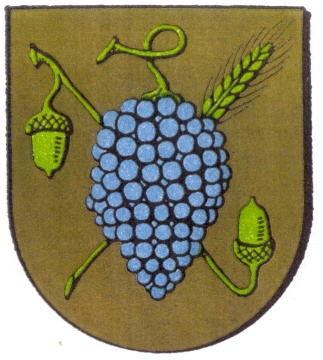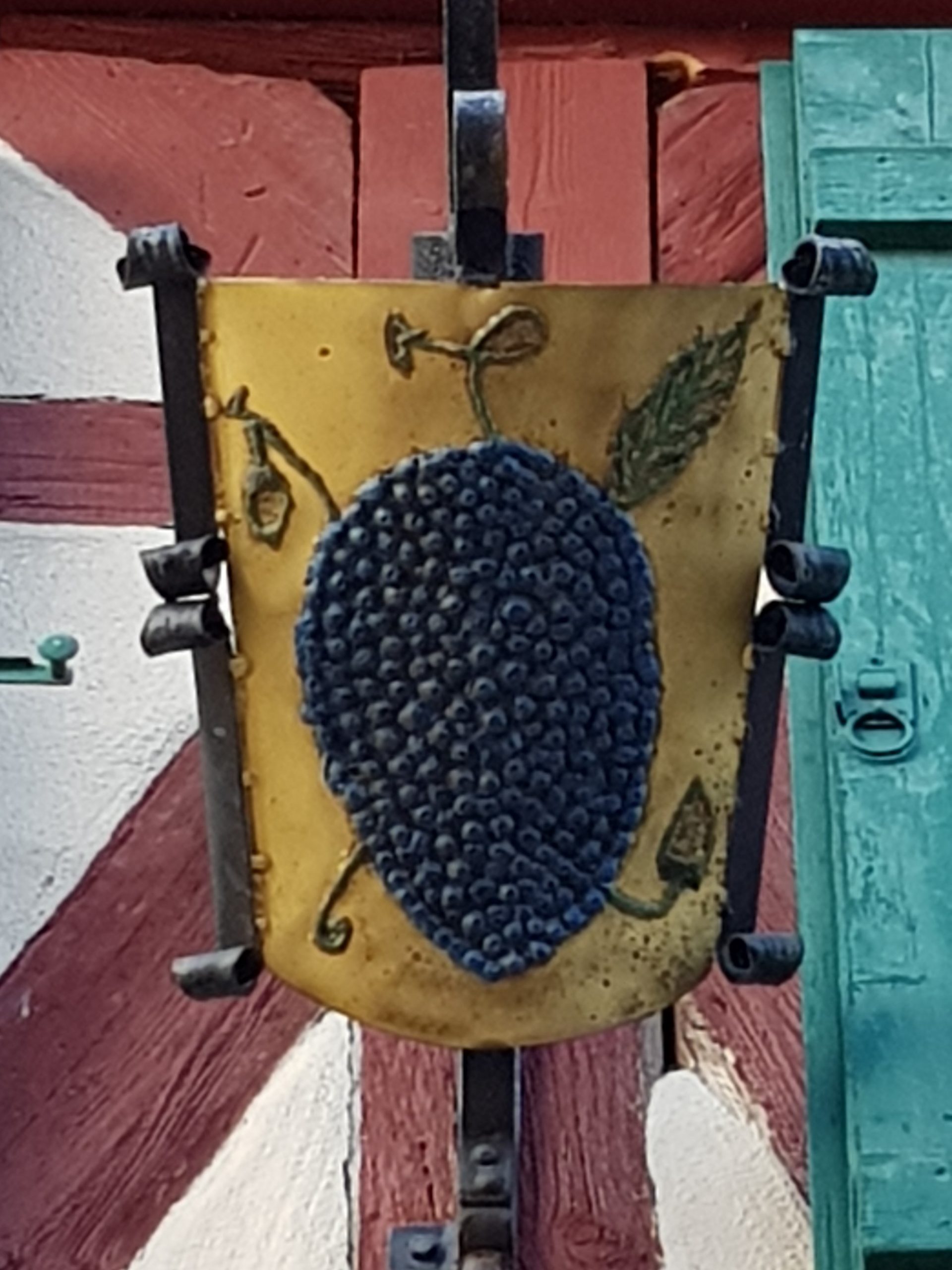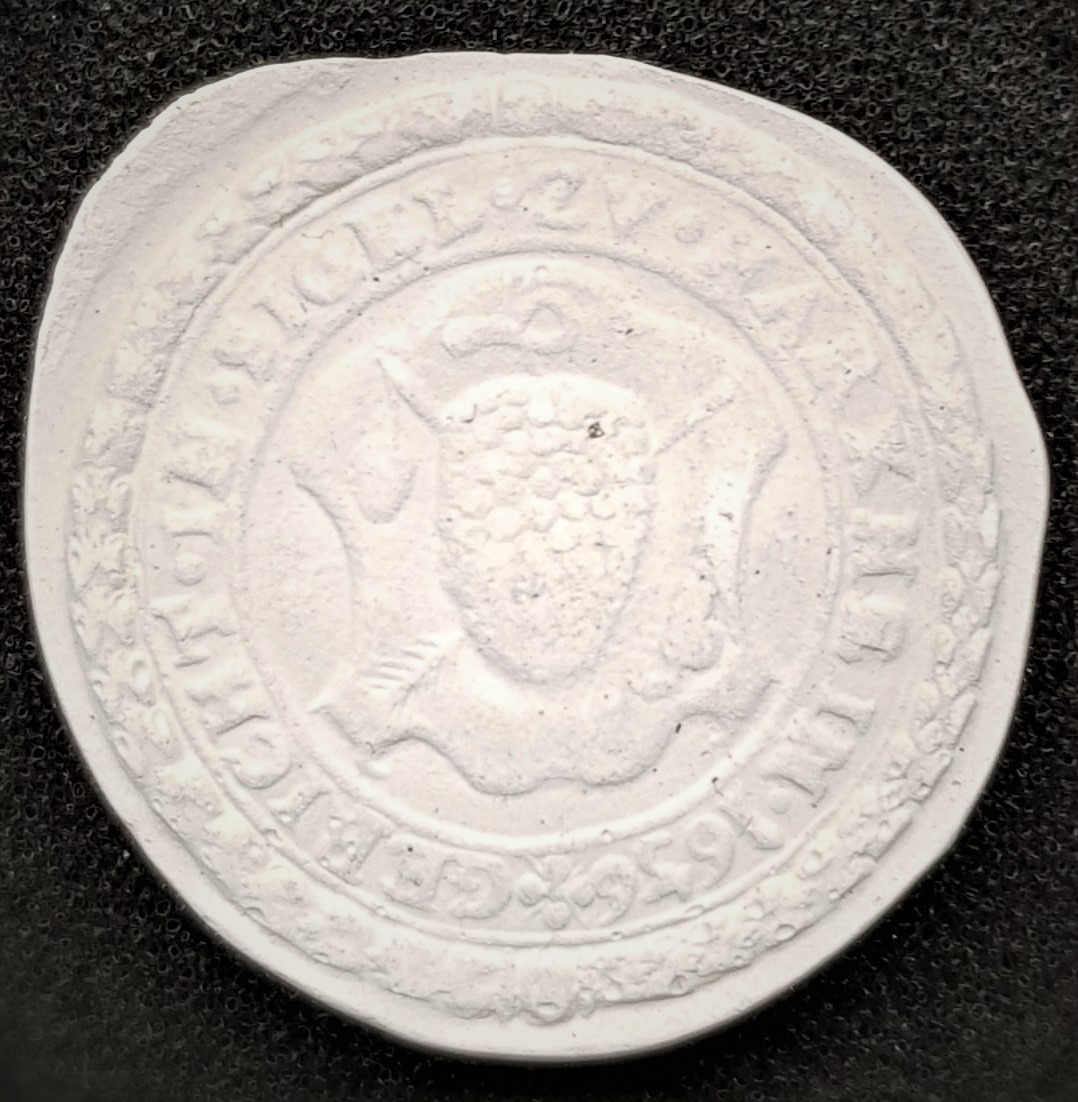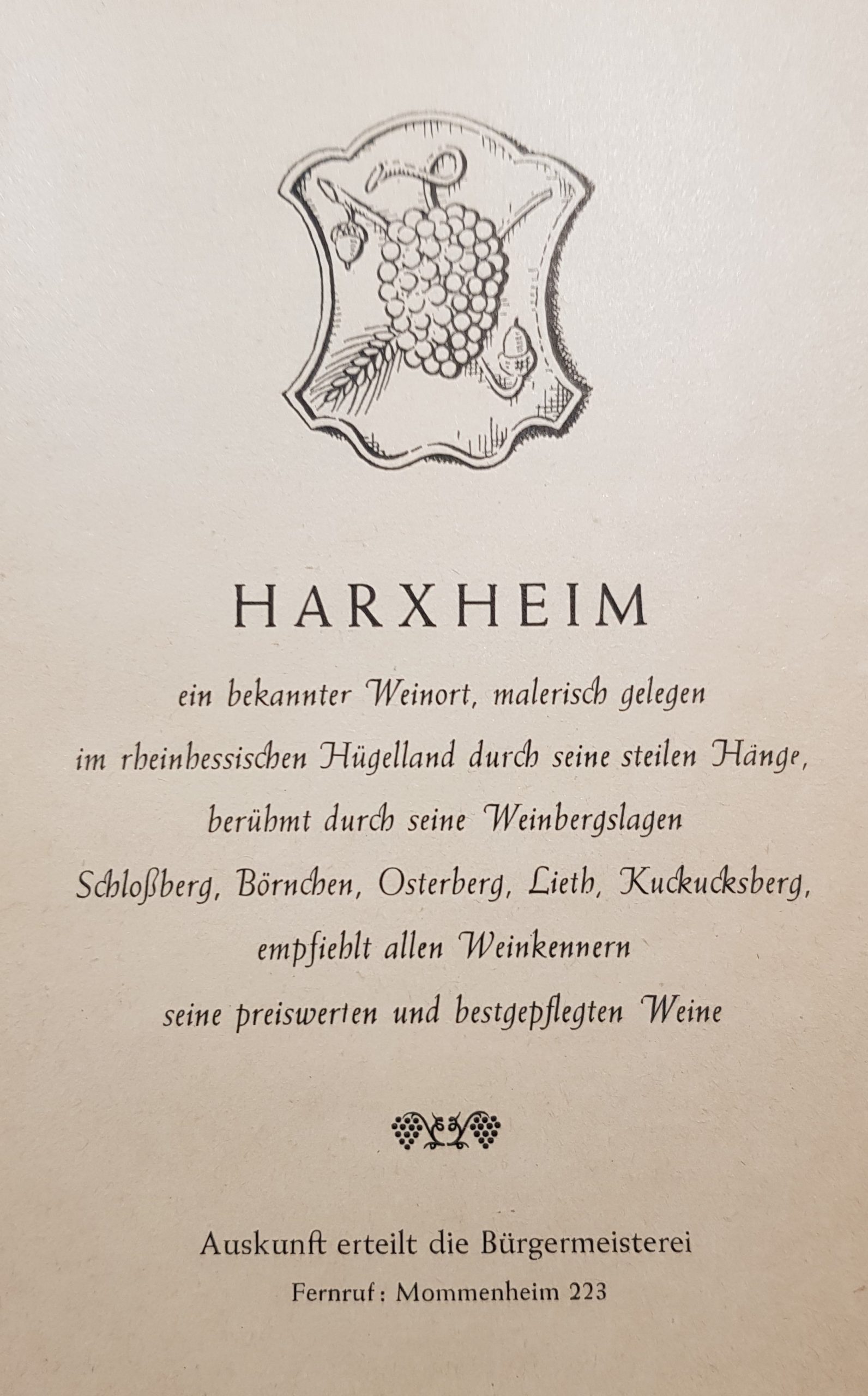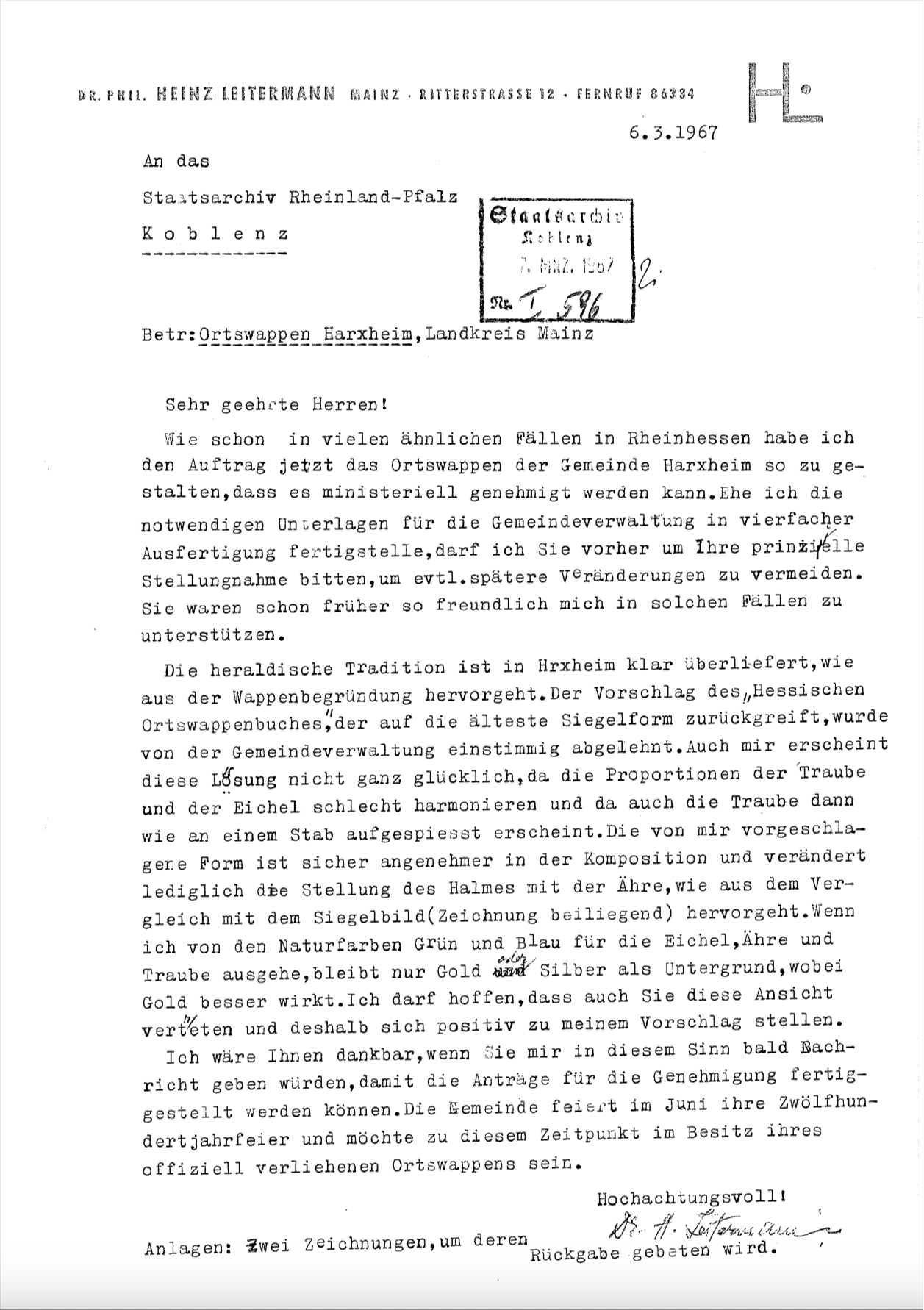The Harxheim coat of arms
The current Harxheim coat of arms was certified in 1967 by the Ministry of the Interior of Rhineland-Palatinate and goes back to an old court seal from 1636.
The Harxheim local coat of arms is precisely defined in the official description of the coat of arms:
“In gold, a green ear of corn and a green leafless oak branch, each with a downward hanging acorn and an upward standing acorn, intersecting and topped with a blue cluster.” 1)
But how did this coat of arms come about?
Since the middle of the 15th century, smaller towns had often tried to have their own coat of arms. The emblems of the territorial lords and church patrons were often included in the coats of arms, as well as representations of the place name. Coats of arms like the one of Harxheim, in which these references are missing, are rather rare. The coats of arms were usually first used in local court seals and then later often appeared carved in stone on buildings, on murals, or on maps and townscapes. When Rheinhessen became French in 1798 and the previous ecclesiastical and noble local lords lost their possessions, however, the local coats of arms were no longer used and were replaced by the French national coat of arms. From 1816, the Hessian state coat of arms was then displayed on all official letters and the local coats of arms fell further into oblivion. It was not until the end of the 19th century that many communities began to remember and use their local coats of arms again. After World War 2, these efforts continued. As far as possible, every municipality should have a historically and heraldically impeccable coat of arms that has been confirmed by the state of Rhineland-Palatinate.
Harxheim coat of arms; probably the oldest preserved coat of arms of Harxheim, 16th century, colored in afterwards
https://www.heraldry-wiki.com/heraldrywiki/wiki/Harxheim_(Rheinhessen)
The presumably oldest representation of a Harxheim local coat of arms comes from a court sigil to Harxheim from the 16th century. It shows a standing stalk with ear, behind it crosswise a leafless vine stalk with grape and an oak branch with an acorn. There is a star on the right and on the left. This coat of arms is presented as Harxheim’s local coat of arms in the 1956 book “Hessisches Ortswappenbuch” by Karl E. Demanth and Otto Renkhof (municipalities that had belonged to Hesse before World War 2 are still considered here).
Another court seal from 1559 shows an oak branch with acorn crossed with a vine stem with grape, in the lower part three apples are grouped around this representation.
Finally, from 1636 the representation of a court insigel to Harxheim is preserved. This coat of arms was probably used until the beginning of the French period and served the municipality as a template for the coat of arms used today. It shows grape, ear and acorn in the form we know today. However, the spike is directed to the lower left. After the 2nd World War, the coat of arms was initially also represented in this way, as can be seen in the commemorative publication for the 100th anniversary of the Gesangsverein Frohsinn in 1962.
Plaster cast (Mainz City Archives) of the Harxheim coat of arms from 1636 with the ear of corn pointing downwards to the left
Image: Stadtarchiv Mainz, collection of plaster casts of seals from Rheinhessen.
Coat of arms as depicted in 1636 in the Festschrift of the Gesangverein Frohsinn on the occasion of its 100th anniversary in 1962
Picture source: Festschrift for the 100th anniversary of the Männergesangsverein Frohsinn, 1962, p. 5
A few years later, the people of Harxheim had this coat of arms officially checked by the State Archives of Rhineland-Palatinate for its suitability as a local coat of arms. Just in time for the 1200th anniversary of the village in 1967, it was officially confirmed by the authorities. For artistic reasons, a small change was made in this context: The ear of corn points to the top right in the authenticated version. The correspondence on this and the document can be seen in this attachment Harxheimer Ortswappen.
Attachment The Harxheim coat of arms
State Archives Koblenz, 07.03.1967
References:
Leitermann, Heinz (1968): Das Ortswappen der Gemeinde Harxheim. In: The Rhine Front. Booklet 3. the wine-growing community of Harxheim with a list of inhabitants. Bechtolsheim. S. 99 – 101.
1) Certificate of approval dated June 7, 1967, issued by the State of Rhineland-Palatinate, Ministry of the Interior.

